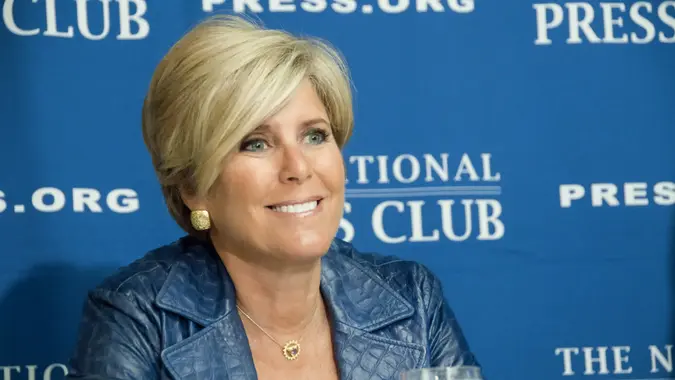I Asked a Financial Planner How To Retire Comfortably on $500K: Here’s What He Said

Commitment to Our Readers
GOBankingRates' editorial team is committed to bringing you unbiased reviews and information. We use data-driven methodologies to evaluate financial products and services - our reviews and ratings are not influenced by advertisers. You can read more about our editorial guidelines and our products and services review methodology.

20 Years
Helping You Live Richer

Reviewed
by Experts

Trusted by
Millions of Readers
Retiring on $500,000 may sound unrealistic, but is it possible with careful planning? A half-million-dollar nest egg could provide steady income for decades if retirees use the right mix of withdrawal strategies, Social Security timing and cost-saving measures.
Christopher Stroup, a certified financial planner and founder and president of Silicon Beach Financial, said the goal is to stretch every dollar while accounting for healthcare, inflation and lifestyle choices. GOBankingRates asked Stroup how to retire comfortably on $500,000, and here’s what he said.
Pick a Withdrawal Plan
A structured withdrawal plan can prevent overspending early and help preserve savings over the long term.
Approaches such as the 4% rule, dynamic withdrawals or guardrails can generate steady income while allowing flexibility. For a $500,000 nest egg, that often translates into $20,000 to $25,000 per year in withdrawals, which can be supplemented with Social Security.
“The 4% withdrawal keeps your portfolio from depleting too quickly,” Stroup said. “It also creates flexibility. During strong market years, you can take a bit more, and during downturns, you can rely on the higher Social Security check instead of overspending from your portfolio.”
Maximize Social Security
Financial planners said that delaying Social Security benefits can significantly increase lifetime income.
Claiming at age 70 instead of 62, for example, can raise monthly checks, giving retirees a more stable base of income to complement savings. This strategy is especially important when retirement funds are limited.
Stroup said delaying Social Security combined with applying the 4% rule provides a reliable income floor, reducing dependence on market returns.
“This strategy works best when paired with a well-diversified investment mix that provides steady, inflation-adjusted growth,” he said.
Use Annuities for Guaranteed Income
Financial planners often recommend annuities or other guaranteed income products to reduce the risk of outliving savings.
By converting part of a $500,000 nest egg into a predictable monthly payout, retirees could cover essential expenses even if markets fluctuate. This stability allows the remaining savings to stay invested for growth or to handle unexpected costs.
“Allocating around half the portfolio could generate $2,500 to $3,000 per month for life, depending on age, product terms and deferral period,” said Tom Buckingham, chief growth officer at Nassau Financial Group. “This income is guaranteed and protected from market volatility.”
Cut Living Costs
Relocating to a lower-cost area, whether within the U.S. or abroad, can stretch retirement dollars dramatically. Countries such as Portugal, Mexico or Panama, as well as affordable U.S. states, can offer quality of life at a fraction of big-city prices.
Even small lifestyle adjustments, like downsizing or reducing transportation costs, can extend a $500,000 nest egg.
“Lowering your cost of living effectively increases your $500K portfolio’s purchasing power,” Stroup said. “By spending less without compromising lifestyle, you reduce withdrawals and give your investments more runway to grow.”
It’s also about intentionality. “Lifestyle planning adds intentionality, ensuring your money supports both needs and personal values rather than being drained by avoidable expenses,” Stroup said.
Plan for Healthcare
Healthcare is one of the biggest variables in retirement, and it can quickly eat into a fixed nest egg.
Fidelity estimated that a 65-year-old retiring this year can expect to spend $172,500 in healthcare and medical expenses throughout retirement.
Stroup said that careful budgeting for healthcare and other fixed costs helps stretch $500,000 further.
Building these expenses through Medicare, supplemental coverage or health savings accounts (HSAs) into the plan gives retirees more control, keeps unexpected bills from derailing long-term goals and can allow a comfortable retirement on $500,000.
 Written by
Written by  Edited by
Edited by 

























